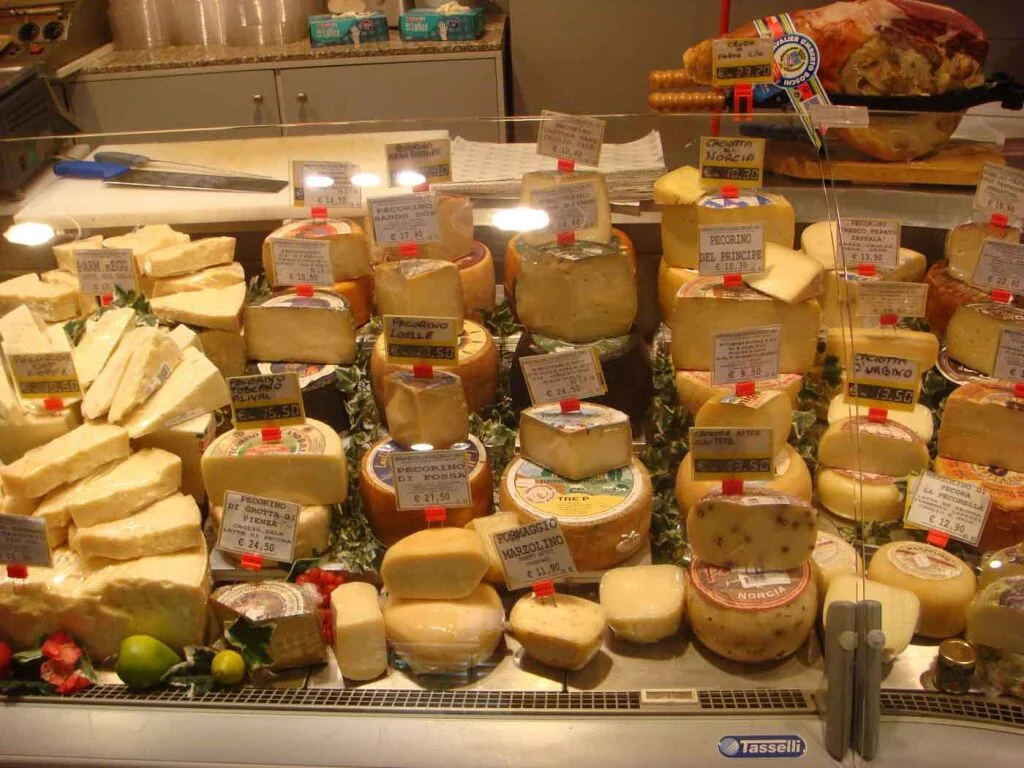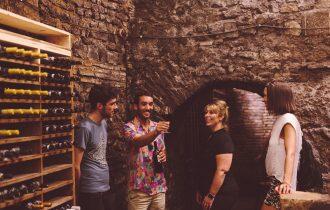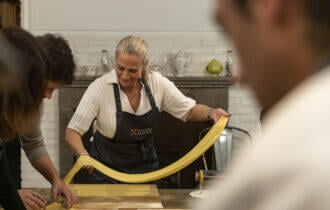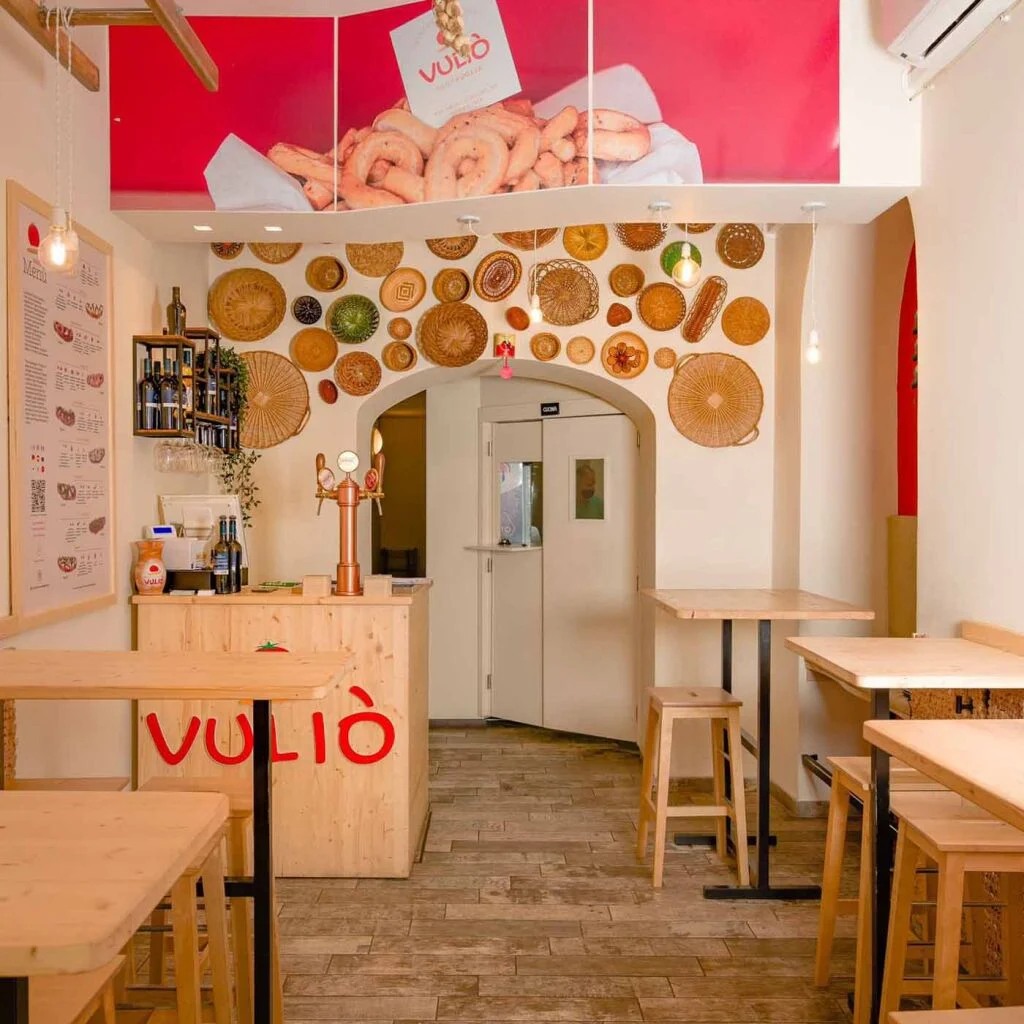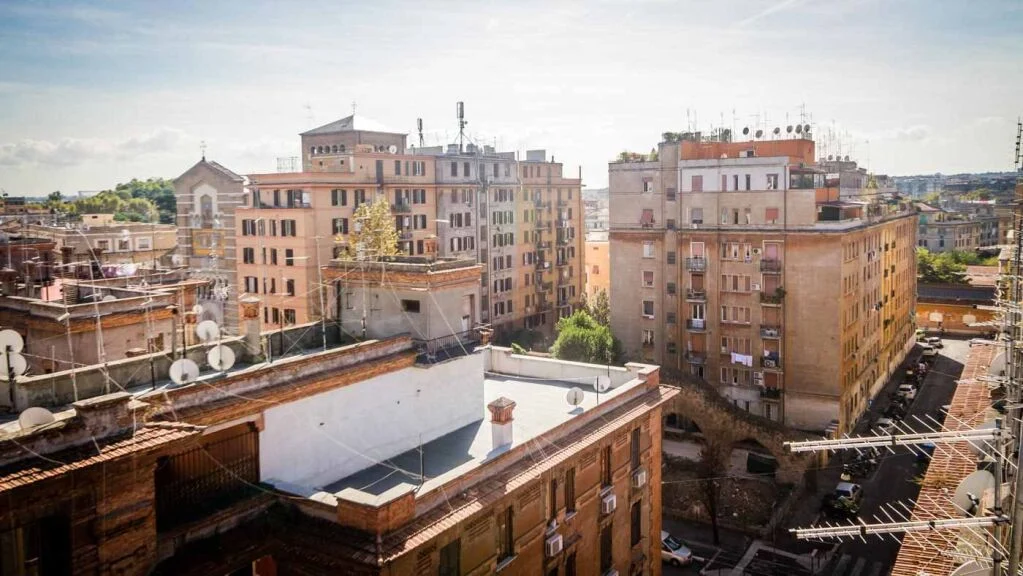It’s been said that all roads lead to Rome, and I’ve come to believe that they did it that way just to make it easier to put so many amazing Italian cheeses in one place. Sure Rome is loaded with ancient architecture, art, and other timeless wonders. Yet there’s also a historical, culinary undercurrent in Eternal City that tells a tasty story through the language of cheese.
To help you experience the best Italian cheeses on your next Rome food tour, I thought I’d bring this delectable dairy into sharper focus.
The Legacy of Cheese in Roman Cuisine
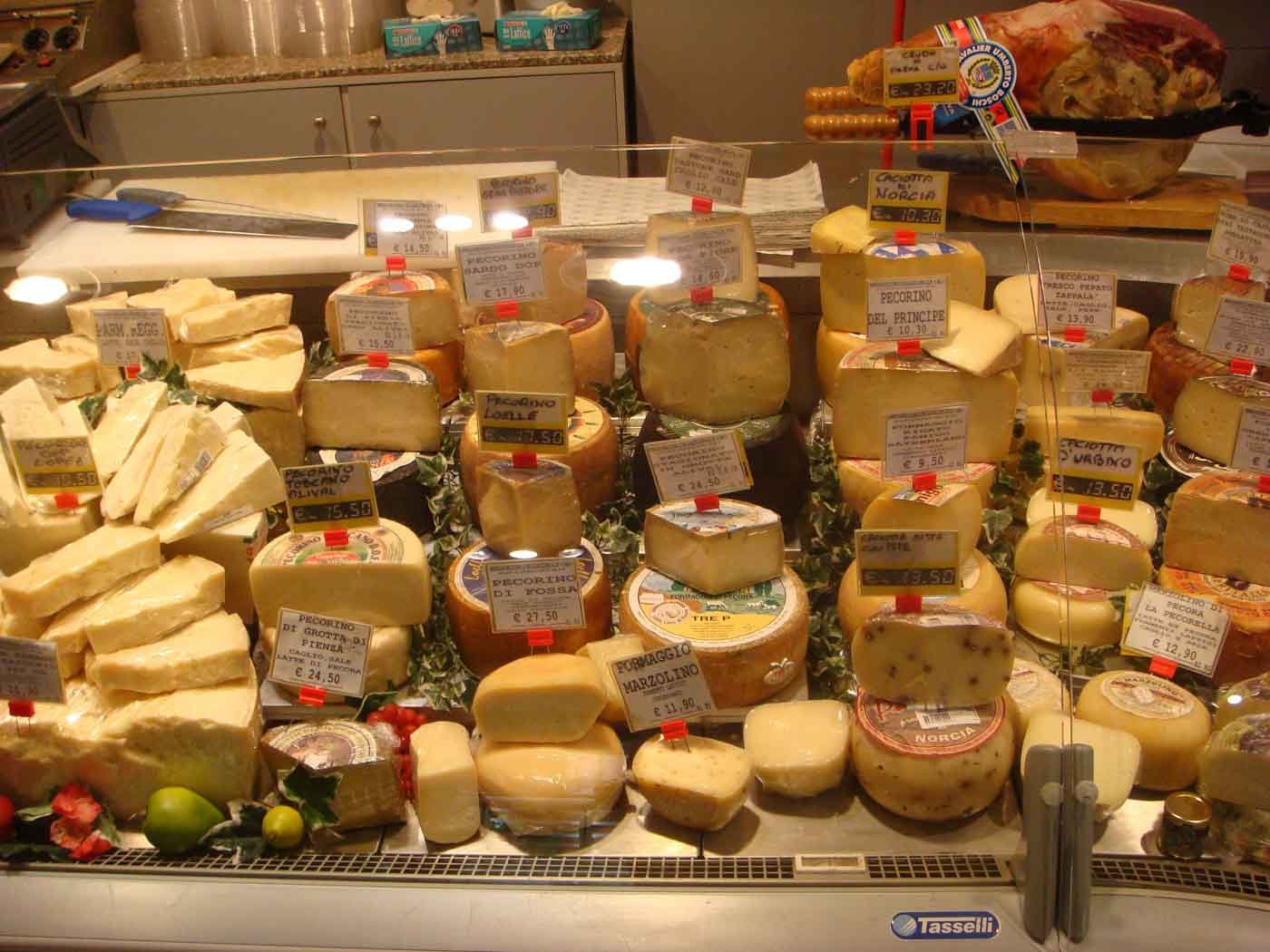
Photo credit: Wikimedia Commons licensed under Attribution 2.0 Generic (no changes made)
Cheese has been an integral part of Roman cuisine since ancient times. Historical records show that cheese-making was practiced in ancient Rome as early as the 2nd century BCE. Shepherds in the countryside around Rome perfected the art of crafting hard, salty cheeses like Pecorino Romano.
They could then be aged which not only intensified the flavor but made the cheese easy to transport. This made it valuable for Roman citizens, as well as the soldiers who needed calorie-dense foods in the far-flung corners of the ever-expanding empire
Today, Pecorino Romano remains a cornerstone of traditional Roman recipes. It lends its sharp, savory richness to iconic dishes like cacio e pepe, carbonara, and amatriciana. Yet it’s only one of many cheeses
Must-Try Cheeses in Rome
You’ll find more great cheeses in Rome than I could name in one article. However, you’ll also see the following featured in some of the best Italian foods in the Eternal City.
Pecorino Romano
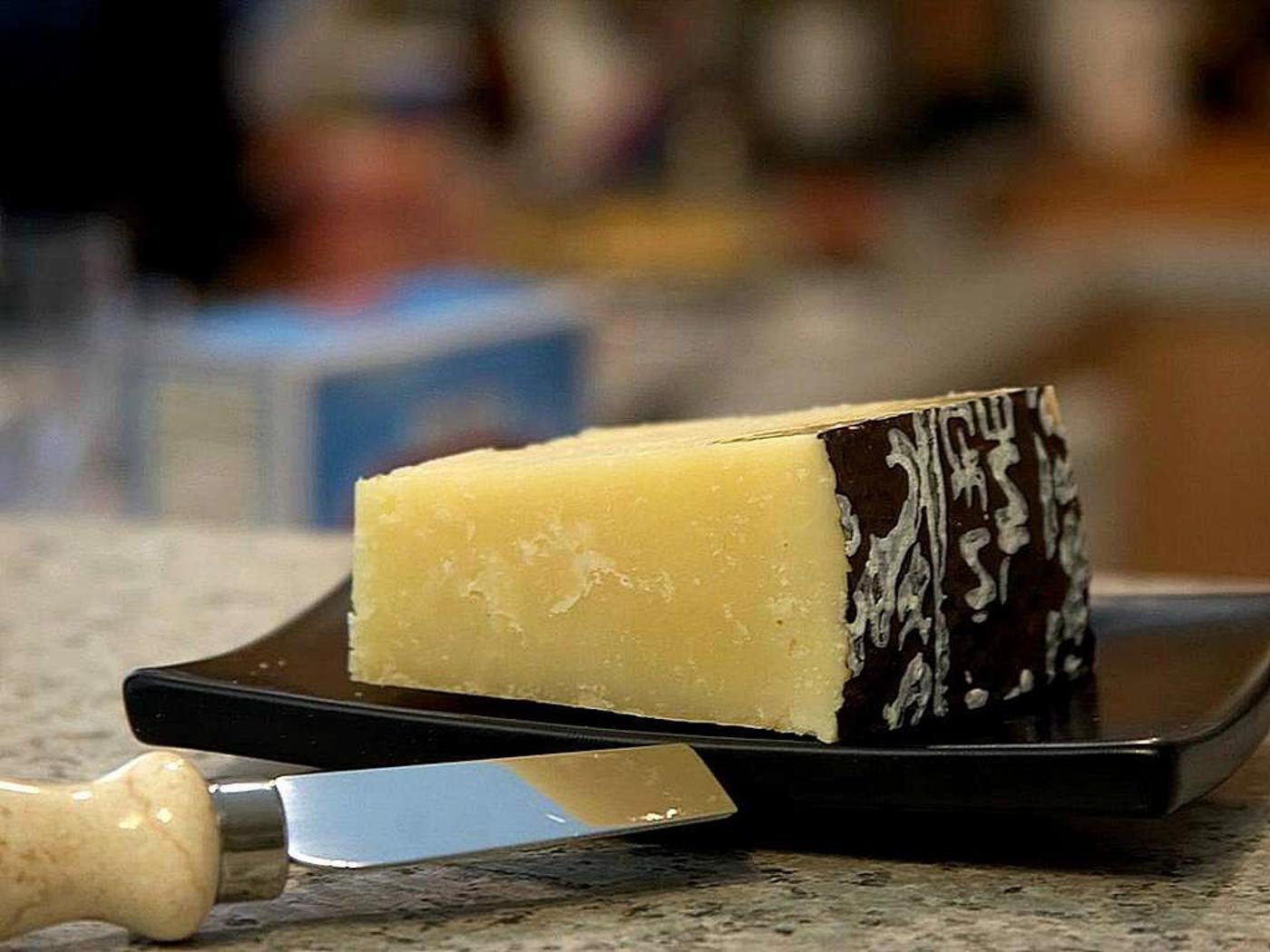
Photo credit: Picryl licensed under Public Domain Mark 1.0 Universal (no changes made)
Pecorino Romano is a hard, salty cheese known for its sharp, tangy flavor. Historically made from sheep’s milk it’s a cornerstone of authentic Roman cuisine. It’s often grated over pasta dishes like cacio e pepe, amatriciana, and carbonara, where its boldness balances simple ingredients.
Burrata
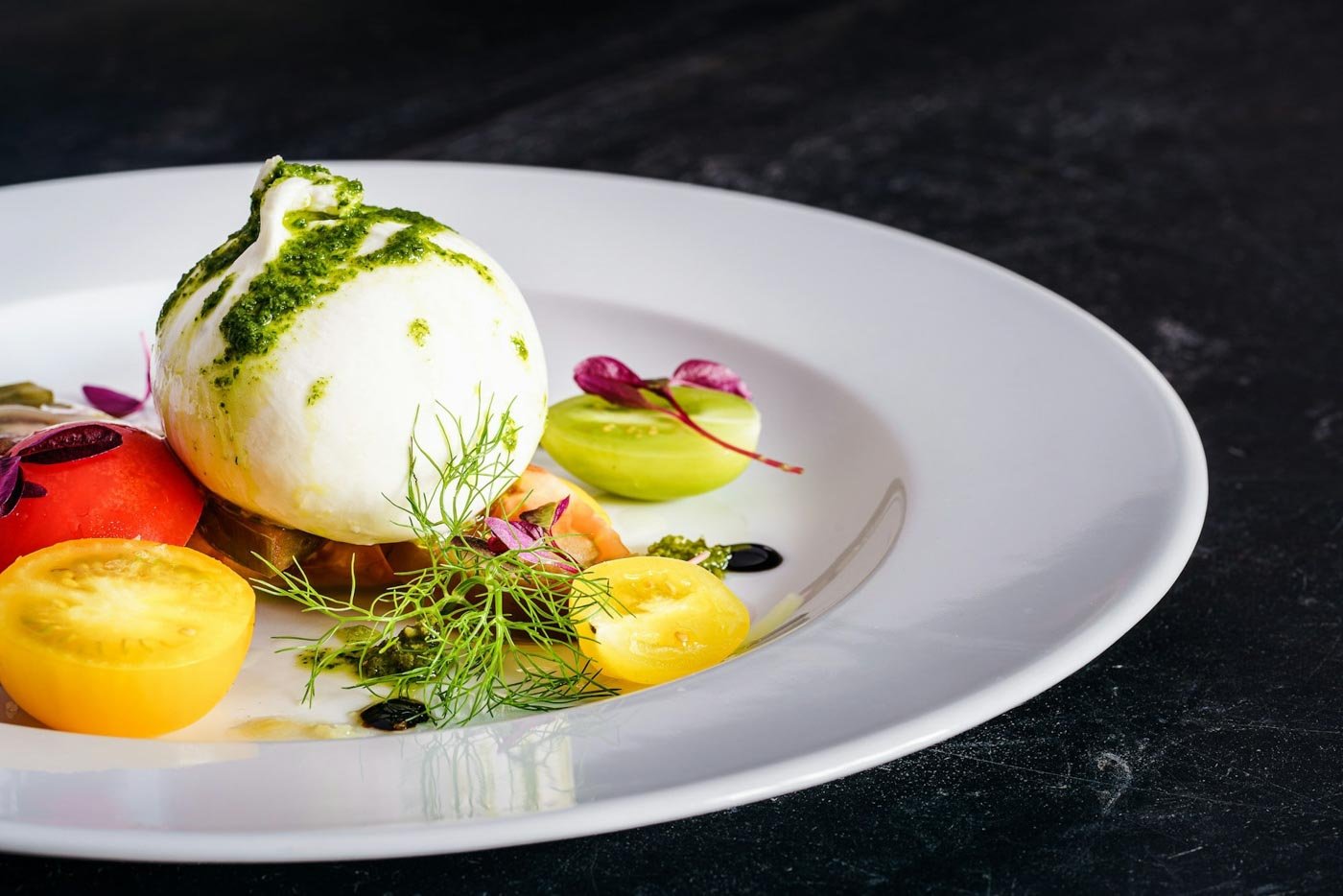
Burrata is a fresh Italian cheese made from mozzarella and cream. It has a rich, buttery interior encased in a delicate mozzarella shell. In Rome, you often see burrata eaten fresh, typically paired with ripe tomatoes, arugula, and a drizzle of high-quality olive oil. A lot of trattorias have it on their appetizer menu.
Stracciatella di Bufala
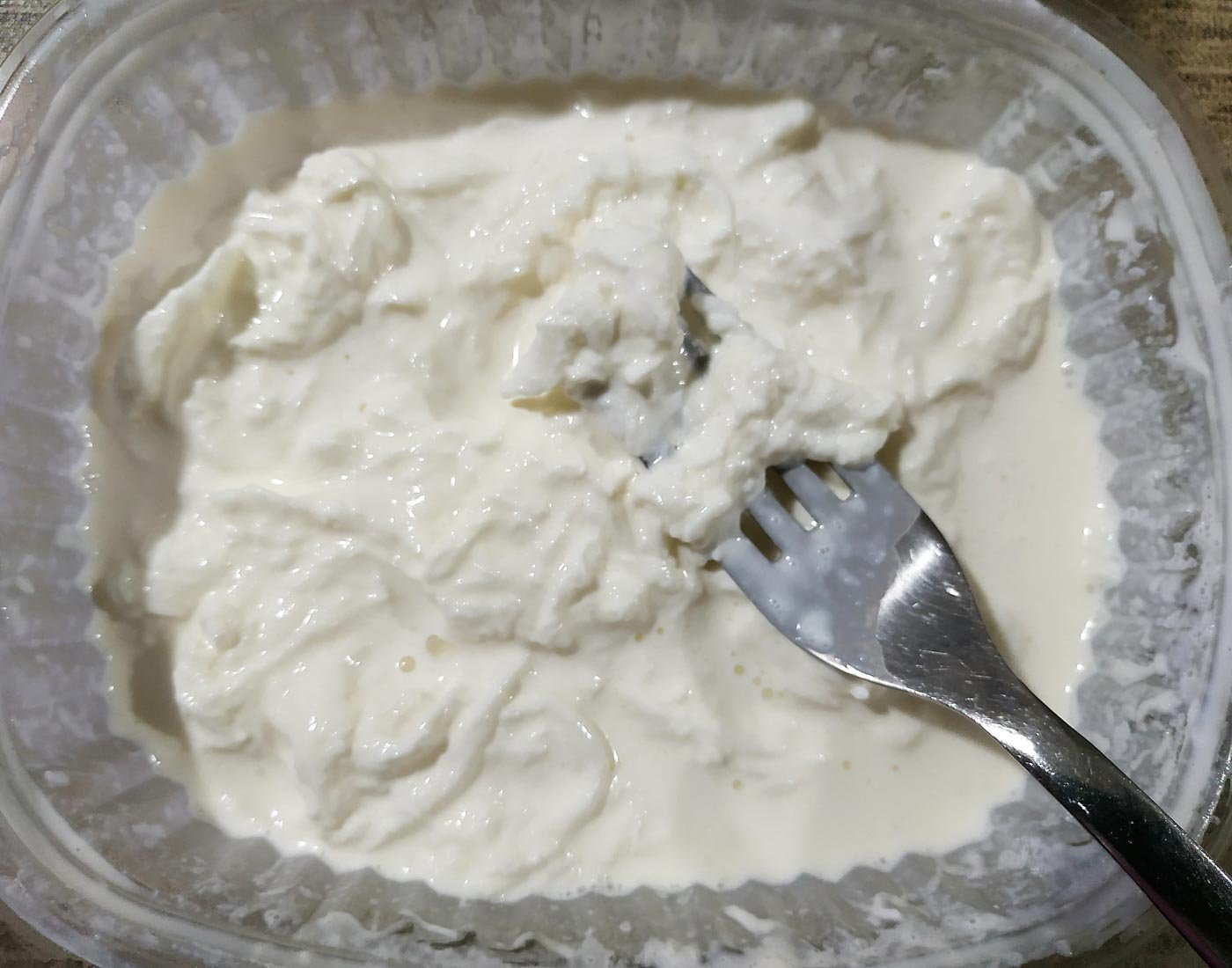
Photo credit: Wikimedia Commons licensed under CC0 1.0 Universal (no changes made)
Stracciatella di bufala is made of fine strands of buffalo mozzarella soaked in sweet cream. This process gives it a luscious, velvety texture. In Rome, you often find it served on its own or as the creamy filling inside burrata. You’ll sometimes find stracciatella di bufala as a decadent topping on crostini or salads.
Ricotta Romana
Ricotta Romana is not truly a cheese but a soft, slightly sweet dairy product that’s made from sheep’s milk whey. I adore its light, airy consistency and that it has enough versatility to be used in both savory dishes. It even lends light richness to iconic Roman desserts such as cassata or crostata di ricotta.
Caprino
Caprino is a type of goat cheese that you find in Rome in both fresh and aged forms. The fresh version is typically mild and creamy, and I like to use it smeared on some rustic bread with some herbs or a drizzle of home.
The aged versions of caprino tend to be tangier and more intense. In Rome, you often find it as part of an antipasto platter, cheese board, or charcuterie board.
Provatura
Provatura is a semi-soft, stretched-curd cheese that I find very similar to mozzarella. Yet its defining characteristic is that it’s made exclusively with buffalo milk, which has a higher fat content than cow’s milk. This gives it exceptional richness and a slightly lower melting point. In Rome, provatura is traditionally used in dishes like supplì al telefono and baked eggplant.
Top Cheese Shops and Markets in Rome
With such a rich culinary tradition of world-class cheese, it only makes sense that Rome is home to some of the best gourmet cheese shops in the world.
La Tradizione
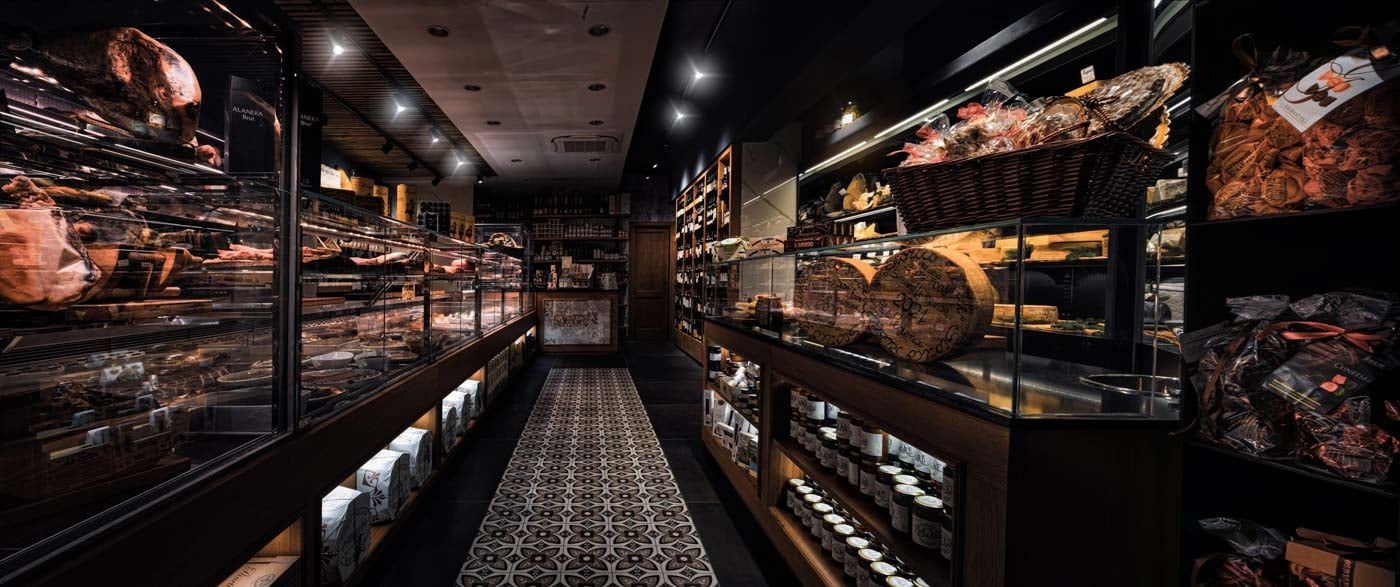
Photo credit: La Tradizione
Often referred to by the locals as Rome’s “cheese museum,” La Tradizione in the Prati district offers an astonishing selection of over 500 cheeses. You can find varieties from all across Italy and Europe. They also have a very respectable sausage selection for putting together a charcuterie board.
I also appreciate the staff’s skill at guiding you through the staggering array of regional specialties. La Tradizione is a must for any serious cheese lover on a Rome food tour.
La Tradizione (€€) – Via Cipro, 8/E, 00136 Roma RM, Italy.
Beppe e i Suoi Formaggi
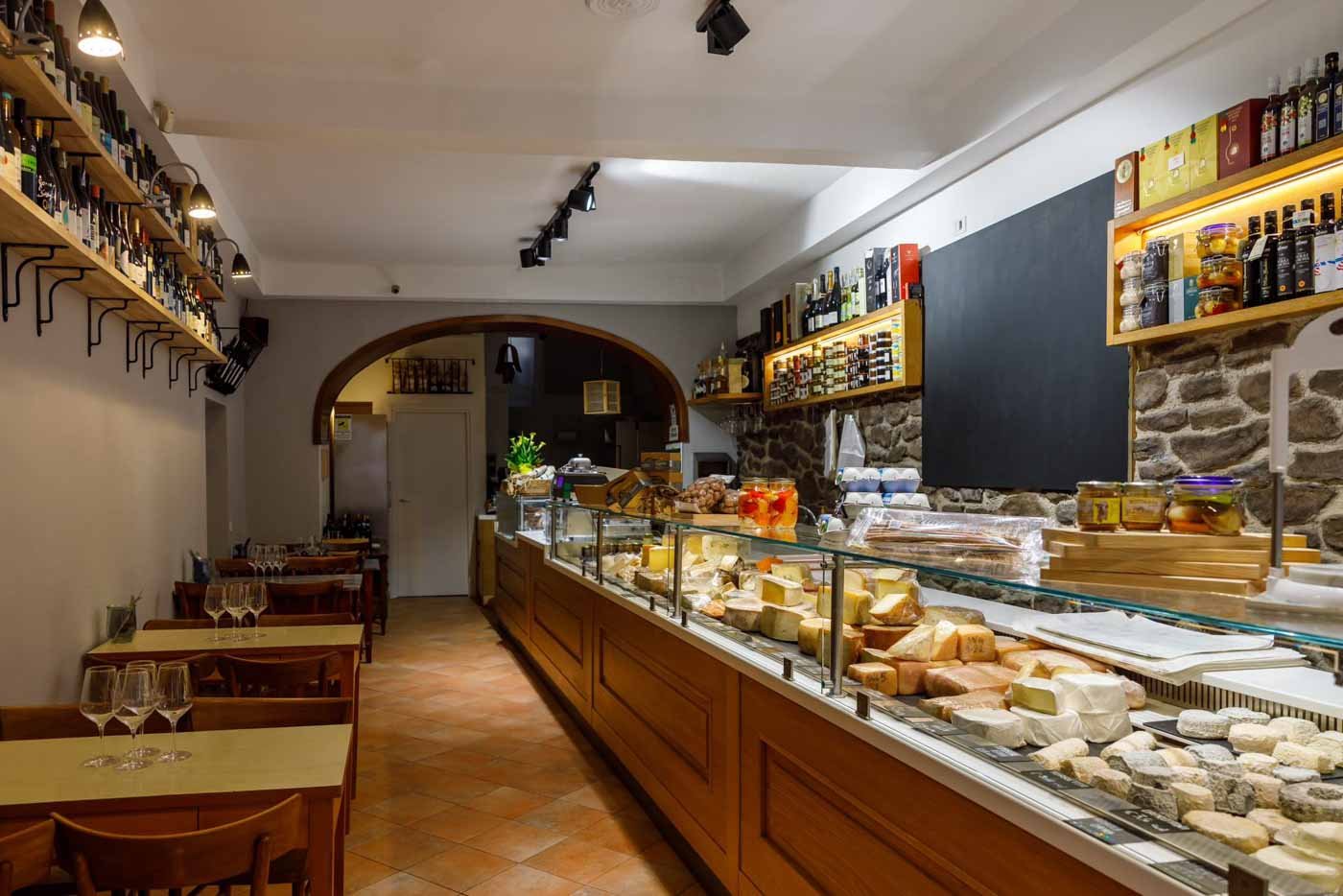
Photo credit: Beppe e i Suoi Formaggi
Located near Campo de Fiori, Beppe e i Suoi Formaggi is renowned for its carefully curated collection of artisanal cheeses. Many of which are sourced from the owner’s own farm in Piedmont, letting you taste a little bit of northern Italian cheese on the bustling streets of Rome.
The store emphasizes raw milk cheeses and unique regional finds that are literally impossible to find in the US. I think it’s the perfect stop for those seeking depth and quality.
Beppe e i Suoi Formaggi (€€) – Via di S. Maria del Pianto, 9A, 00186 Roma RM, Italy.
Antica Caciara Trasteverina
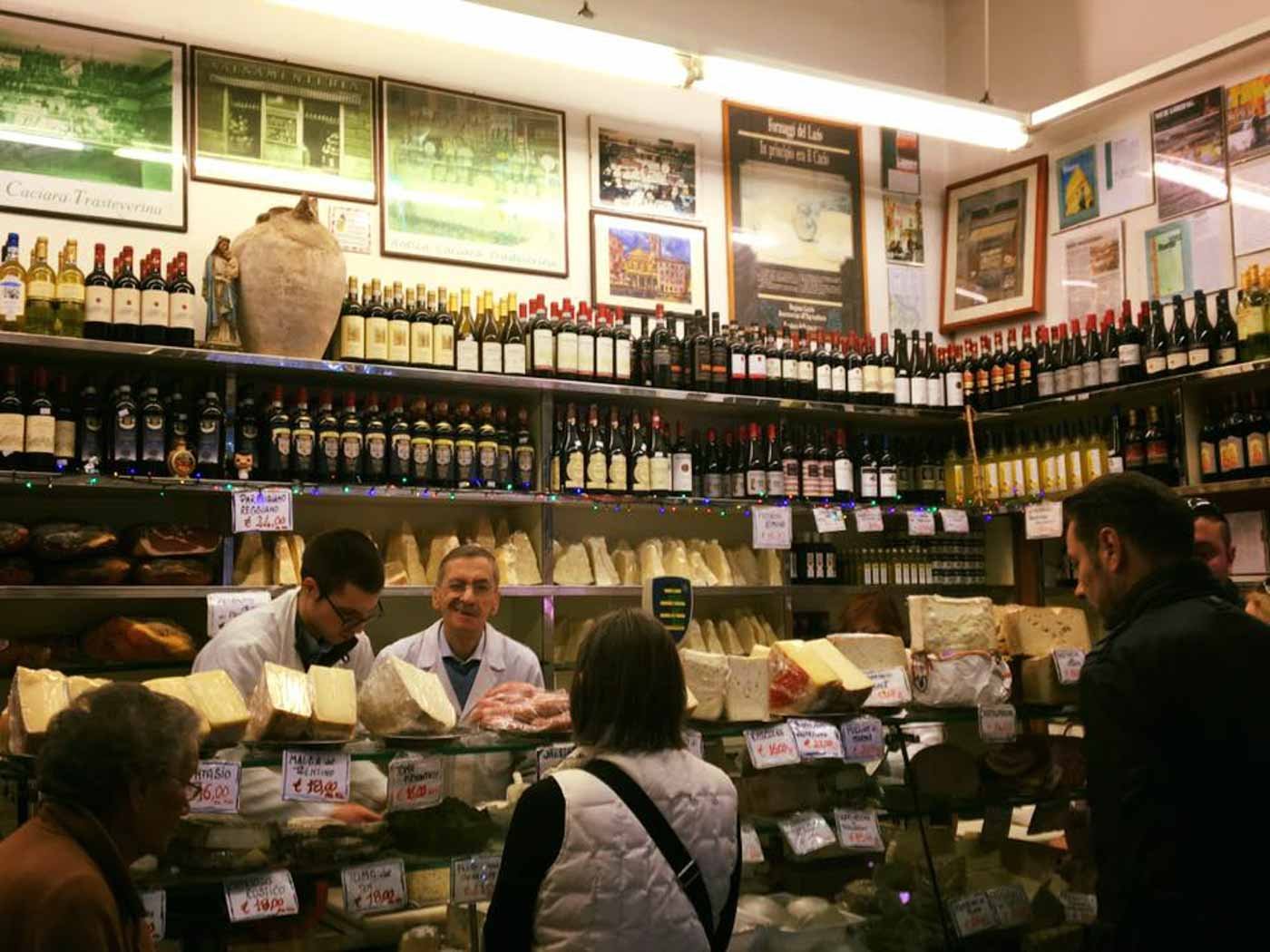
Photo credit: Antica Caciara Trasteverina
This historic shop has been serving Trastevere since 1900 and remains a favorite among locals for its authentic, no-frills charm. They specialize in traditional Roman cheeses like Pecorino Romano and ricotta, along with house-cured guanciale.
Antica Caciara Trasteverina (€€) – Via di S. Francesco a Ripa, 140A/B, 00153 Roma RM, Italy.
Volpetti
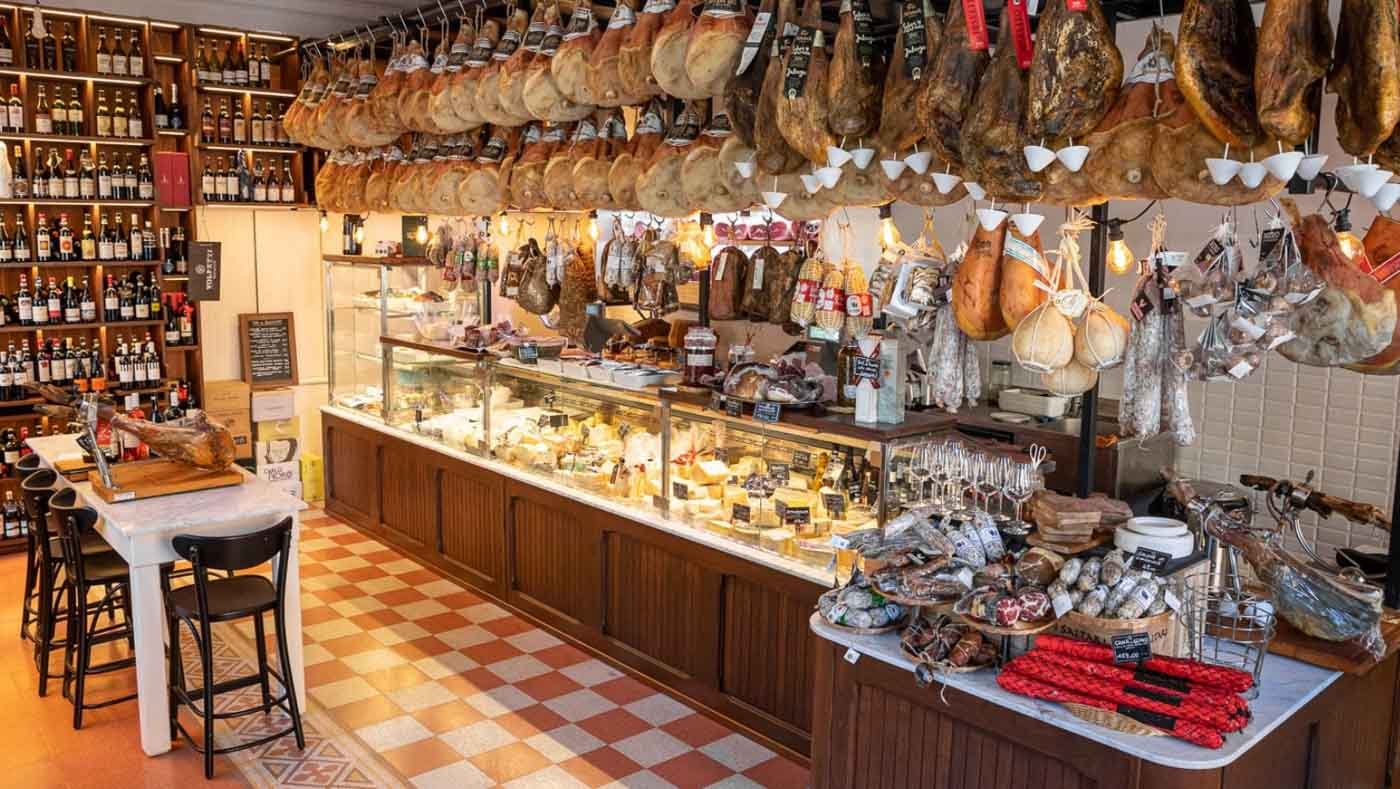
Photo credit: Volpetti
In the heart of Testaccio, Volpetti is a gourmet food lover’s paradise, offering an impressive range of cheeses alongside salumi, oils, and wines. Their cheese counter includes both familiar and rare varieties, with tons of tasting options. I think it’s the perfect place to put together a picnic basket.
Volpetti (€€) – Via Marmorata, 47, 00153 Roma RM, Italy.
Experiencing Cheese Like a Roman
If you want to experience cheese like a Roman, sample some at local neighborhood markets and eateries. In restaurants and trattorias, don’t hesitate to order a cheese platter known as a “Formaggi Misti.”
Pairing Roman cheese with local wines enhances the experience. I find that Pecorino Romano goes nicely with a bold red like Cesanese. I love burrata with a crisp Frascati white. Cheese also pairs beautifully with Roman bread, fig jam, or even a drizzle of local honey.
Bringing a Taste of Rome Home
If you want to savor Rome’s flavors after your trip, many cheese shops and markets offer vacuum-sealed options perfect for travel. Hard cheeses like Pecorino Romano, Parmigiano Reggiano, and aged Caprino don’t need refrigeration. Soft cheeses like burrata or fresh ricotta are too perishable for travel.
Always check your home country’s customs regulations—many allow hard cheeses in luggage if they’re sealed and labeled. Be sure to declare your cheese upon arrival and pack it securely in your checked baggage.
Sources:
Antica Caciara. (n.d.). Antica Caciara Trasteverina. http://anticacaciara.it/
Beppe e i suoi formaggi. (n.d.). Beppe e i suoi formaggi. http://www.beppeeisuoiformaggi.it/
Eating Europe. (n.d.-a). Rome food tours. https://www.eatingeurope.com/rome/
Eating Europe. (n.d.-b). The best food in Italy: 16 dishes you must try. https://www.eatingeurope.com/guides/best-food-in-italy/
Italia.it. (n.d.). Testaccio market: A Roman food experience. https://www.italia.it/en/lazio/rome/testaccio-market
La Tradizione. (n.d.). La Tradizione. http://www.latradizione.it/
Volpetti. (n.d.). Volpetti. http://www.volpetti.com/

